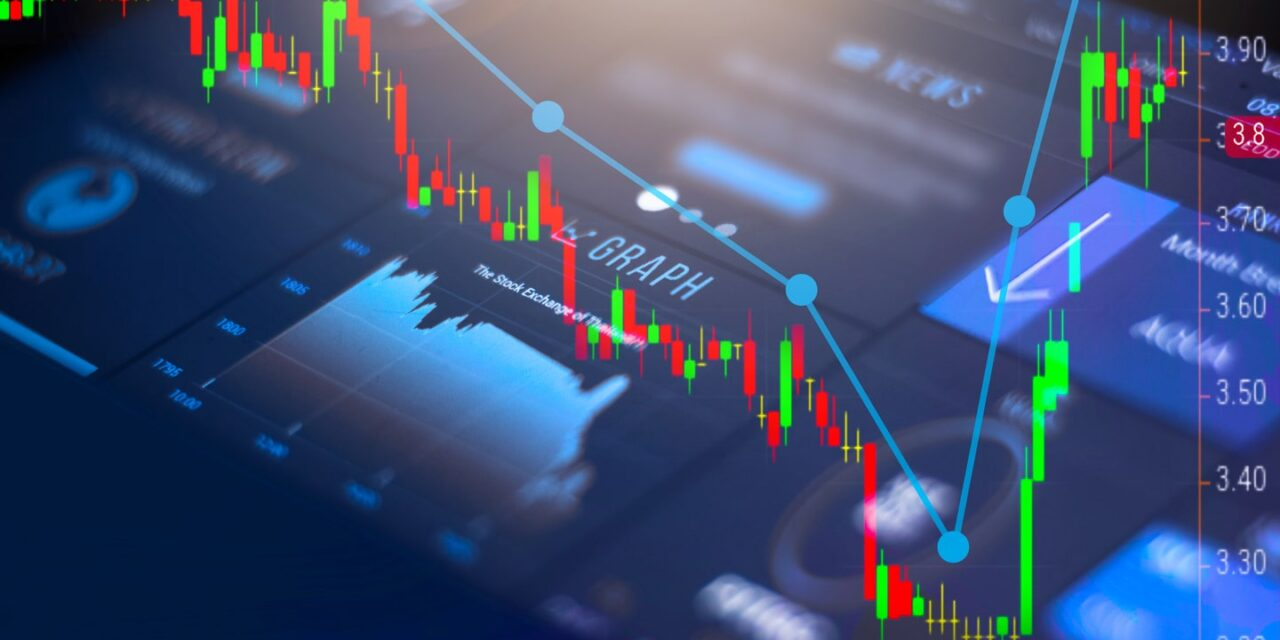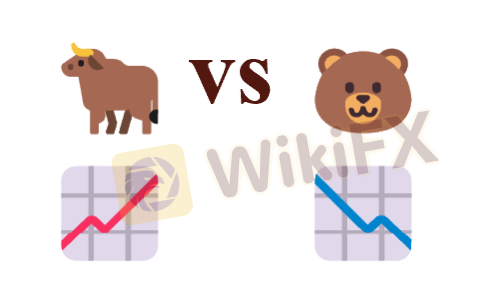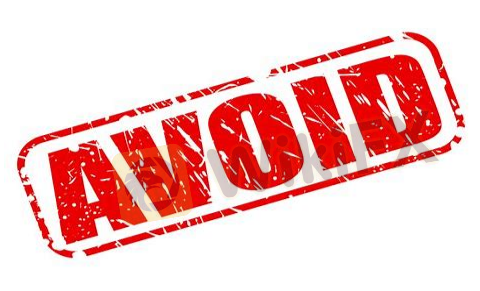
Forex technical analysis, a method of predicting price movements and future market trends by using charts, goes viral among market traders. It is vital as it allows traders to remain alert in the event of a particular price trend.
Even though you are new to this field, this article will clarify your doubts about forex technical analysis. WikiFX has gathered all basic information about technical analysis, including a brief introduction, scope, principles, pros & cons, as well as how to learn it.
Q: What is WikiFX?
A: WikiFX is a professional, global forex broker regulatory inquiry tool with extensive and easily accessible data on almost 60,000 FX Brokers around the world. You can learn about the Forex Industry, News, Educational Resources, and more at “wikifx.com”.

What is Technical Analysis?
In the forex market, technical analysis is the analysis and prediction of price direction based on historical price movements and chart patterns. To put it simply, it is a way to understand what is happening in the market by reading forex charts. In addition to studying the market, traders also use technical analysis to plan their future trades.
Due to the structure and high liquidity of the forex market, technical analysis is particularly effective when used to trade any traded financial instrument and all asset classes. Furthermore, short-term investors tend to use it more than long-term investors.

Scope of Technical Analysis
For forex, equity, and commodities traders, technical analysis is widely used to determine short-term and long-term market trends. As more and more people learn the skills of technical analysis to earn good returns, the scope of technical analysis is expanding every day.
Principles of Technical Analysis
The trader generally uses technical analysis as one of two types of forex analysis. Another analysis is a fundamental analysis that analyzes the value of a currency based on its native country's economic conditions, market conditions, or news and rumours. Unlike fundamental analysis, technical analysis is based on three principles :
- Markets Discount Everything
All the data and price action, including market news, price expectations, forecasts, data, and interest rates, are priced into the volumes and assets' prices that are shown on the charts. According to them, all the data is simply priced into the charts, making fundamental analysis less necessary than technical analysis.

- Price Moves in Trends
Price movements always follow trends, another key principle. Once a trend has begun, the next price direction is more likely to follow the same initial trend direction than to move against it. As a result of this principle, prices do not move randomly. This assumption is at the core of most technical analysis trading strategies and indicators.
- History Repeats Itself
Today's market traders tend to behave the same way as they did in the past. It is the same idea for them to overcome the various information that influences the market, so the fluctuation motive will recur.
Pros & Cons of Technical Analysis
The importance of technical analysis for forex traders cannot be overstated. Forex traders should be familiar with the pros and cons of technical analysis so that they can choose analysis tools wisely to assist them in their decision-making.
Pros
1. Objective
Therefore, whatever signals you observe, whether they are buying or selling signals, are what they are. Traders cannot manipulate them to operate according to their will. It makes technical analysis more reliable when used to make trade decisions.
2. Flexible with Market & Time
Any financial market can be analyzed using technical analysis. Traders can use it in forex, futures, and forward markets, as well as any other trading medium. Technical analysis is also flexible with time. In other words, it doesn't have a limit on how long it can analyze. An analysis of prices from hundreds of years ago, or even hours ago, can be done using a similar principle of technical analysis.
3. Trend Analysis
Technical analysis has one of the ultimate advantages of helping traders and investors predict market movements and make investment and trading decisions based on that information. Technical analysis is useful for predicting the market's three trends: Up Trend (bullish), Down Trend (bearish), and Range (sideways).

4. Make Entry and Exit Points
Technical analysis can be used as an indicator to enter and exit the market. Traders and investors can use it to predict when to enter and exit trades, resulting in good returns. The use of chart patterns, candlesticks, moving averages, Elliot wave analysis, and other indicators can be very helpful to traders when making entry and exit decisions.
5. Provide Early Signals
Technical analysis provides investors and traders with early signals before the reversal of the trend, so they can take their decisions based on them. With the help of technical analysis, market makers' activities can be analyzed, and such activities can be observed with price-volume analysis.
6. Define the Stop Loss and Target
For investors and traders in the market, Technical Analysis clearly defines Stop Loss and Target. Traders and investors can then decide according to their risk appetite.
7. Abundant Information Available
Investing, short-term trading, and swing trading all benefit from technical analysis. Technical charts provide traders and investors with a lot of information that helps them build positions and make trades. Among the types of information provided by technical analysis and used by traders in the forex market are support, resistance, chart patterns, market momentum, volatility, and trader's psychology.
Cons
1. Too Much Information
As we have discussed before in the “Pros” section, lots of information brings benefits as well as drawbacks. One can easily become confused with so much information.
2. Cause A Sudden Market Change
A sudden market change or a separate trend can result from the popularity of technical analysis. Traders come to the same solution for their trades when they use the same analytical technique. As a result, a right or wrong assumption can become a trend on its own and affect the price value in a disproportionate way.

3. Uncertainty of the Purchase and Sell of Signals
Prices for buying and selling are highly uncertain. Due to the large distance between the top and bottom prices, and the coverage between the two, it may be attributed to the distance between purchasing and vending signals. As a result of the uncertainty, traders often make poor decisions. Thus, most traders are hesitant to make decisions based on technical analysis due to its uncertainty.
4. Price Uncertainty
There is no exact point where the price will change in the future based on technical analysis. Forecasts can only predict trends, but they cannot pinpoint exactly when prices will rise or fall. Furthermore, it cannot provide an exact estimate of the trend's duration.
5. Time Lag
Trading forex requires quick reactions. Your predictions will only work if you implement them quickly. There are times, however, when the signals may delay and the traders may take too long to make a decision. The prediction may thus already be historical by the time action is taken. Therefore, if quick decisions need to be made, technical analysis is necessary.

How to learn Forex Technical Analysis?
To learn the basics of forex technical analysis, there are plenty of online resources available. Taking online courses and contacting professional traders can help speed up the process. By doing this, you will be able to avoid common mistakes that beginners make.
Technical analysis can be learned best by understanding the key principles and applying them to demo trading. The following are some benefits of using a forex demo account to start trading:
Demo accounts allow you to practice all the skills you've learned while studying in a risk-free environment.
Demo accounts offer all the same tools and features as the real ones, so you can familiarize yourself with the terminal before you start trading. When you move on to the live trading account, this will save you some time.
When you trade in the demo, you cannot possibly go wrong. Since there is no money involved, you are free to experiment and make mistakes. Even if you suffer a setback, it will eventually prove to be a priceless experience.
As a final point, opening a demo account is free, so why not take advantage of it? With a demo account, you can practice your newly acquired analysis skills and see if you can handle manual analysis on your own.

You can also learn by imitating professional traders (copy trading) until you are capable of trading on your own. Trades can be copied automatically or manually through copy trading, in which a trader copies the positions of a professional trader. Using this trading technique, you can follow professional traders with a track record you'd like to emulate. This is a way to automate your trading strategy. By copy trading, traders can learn from and monitor the strategies of successful traders. It is best suited for traders who lack the experience or time to keep up with the market on their own.
Conclusion
In a word, I believe there is no perfect or ideal method of analyzing the forex that will always lead to profits. Traders making short-term decisions will benefit from technical analysis and charting, while long-term traders need to keep up with the latest economic news and data about the countrys currencies they are trading. It is important to note that these analysis methods are only tools.
The importance of technical analysis for very active forex traders cannot be overstated. You can use technical analysis if you are uncertain about future price movements and want to identify future trends, so you can buy and sell at the right time. It is possible to generate profits from technical analysis if you practice it constantly and learn from it. Individual risk appetite, knowledge, and understanding of technical analysis concepts are all factors to take into consideration.
WikiFX recommends you educate yourself enough and do more research before starting forex trading. If you want to learn more about forex-related information and resources, you can visit our website (https://www.WikiFX.com/en) or download the WikiFX APP now.

You Also Like

Differences between Bullish and Bearish Markets in Forex Trading
Dive into the dynamics of forex trading by understanding the uprising bullish markets and the falling bearish markets.

Differences between Dealing Desk & No Dealing Desk Forex Brokers
Learn about Dealing Desk & No Dealing Desk Forex Brokers, their roles, STP & ECN in NDD brokers, along with their pros & cons.

How to Use Currency Pair Correlations in Forex trading?
Dig into Currency Pair Correlations in Forex trading. Understand their concept, influence, importance, calculation, and common pairs.

What is Forex Technical Analysis? Pro & Cons Revealed
Uncover Forex Technical Analysis. Understand its core principles, strengths and weaknesses, and how to learn and apply it in Forex trading.


















